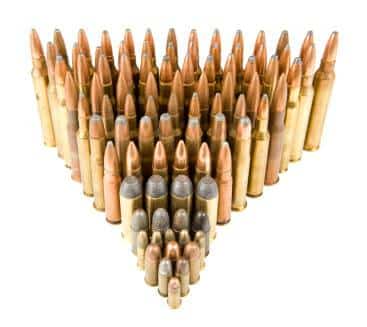 It doesn’t matter if you’re storing supplies away for winter or for a power outage—knowing how long meat will keep under certain circumstances could be the difference between a balanced or unbalanced diet in uncertain times. Knowing a wide variety of ways to keep meat from spoiling will greatly boost your chances of maintaining your food supply for as long as possible. Consider a few possible ways to prepare meat for storage and how different types of meat will hold up under those conditions.
It doesn’t matter if you’re storing supplies away for winter or for a power outage—knowing how long meat will keep under certain circumstances could be the difference between a balanced or unbalanced diet in uncertain times. Knowing a wide variety of ways to keep meat from spoiling will greatly boost your chances of maintaining your food supply for as long as possible. Consider a few possible ways to prepare meat for storage and how different types of meat will hold up under those conditions.
Fresh Meat
Besides just leaving your meat out on the table, keeping your meat in a refrigerator is the fastest way for it to spoil. Any kind of fresh meat in the fridge should be eaten within a week, and any meat that is unrefrigerated should be eaten within a day or a few hours, especially if it’s chicken. Raw beef and steaks are best at about three to four days in the fridge, but they can last up to six if you need them to. This doesn’t include ground beef or organs, however; those need to be eaten within two days or you stand a chance of letting them grow some nasty varieties of bacteria. You will know when you’re beef has turned when it looks brown on the outside and is slightly sticky to the touch .If you’re storing food in the refrigerator for a time when you know power will be hard to come by, this isn’t the most reliable or safest method of preserving your fresh meat.
Fresh pork can last about as long as beef, but five days is the max. The USDA says to eat fresh pork within two days if it’s been sitting in the fridge, or freeze it within five days to prevent a buildup of bacteria. Pork isn’t as bad as chicken for growing harmful bacteria, but it’s still not as safe as beef, which is one of the only meats that can be consumed nearly raw, unlike pork, chicken, or lamb. A good thing about storing pork, however, is that you can get large cuts of meat – like a pork shoulder – that will feed a lot of people, and it’s much cheaper than a large cut of beef. It also doesn’t have as many bones as chicken.
Chicken is the shortest-lasting fresh meat you can buy. It lasts only two days in the fridge and must be cooked to a specific temperature to ensure that all the bacteria that exist in it are gone. Even unspoiled chicken has the potential to be harmful, so it might not be the best choice of meat to store fresh for emergency supplies.
Frozen Meat
Freezing your meat is a good idea for storage, especially if you are certain that power will be readily available for the emergency you’re stocking for. Frozen meat lasts for a long time, and it usually thaws out within a day in the refrigerator. To store meat in the freezer, you can either leave it in its original package or put it into freezer Ziploc bags. Beef is still one of the hardiest meat products, and it freezes well and lasts a long time while frozen. Starting from large cuts of beef – like a beef roast – to smaller amounts of beef – like ground beef – your meat will last from about a year to three months. You can store it longer, but it will make it a little less flavorful. (Though you probably aren’t worried about having full-flavored steaks if you’re storing them for times when food could be hard to come by.)
Pork freezes almost as well as beef. It doesn’t last quite as long, but it can be in the freezer up to eight months and still retain the full flavor. Just like beef though, it can be stored much longer, but you risk your meat becoming a little watery. If you don’t mind this, then go ahead and freeze as much pork as you want, but don’t forget to package it well and inspect the original packaging for holes that would make it less suitable for freezer storage.
Surprisingly, chicken is the best meat to freeze. It freezes very well and will last well over a year before losing any flavor. The best kinds of chicken meat to store are large cuts of boneless chicken and whole chickens. Smaller cuts can go stale quicker, but they should still hold up well for six months or more. In case of a power outage, frozen meat will stay frozen for about two days if the freezer remains unopened. You can also put a blanket over the freezer to help with insulation so the cold will stay in better.
Dried, Cured, and Smoked Meat
Dried meat is when you take all the moisture out of fresh meat through applying salt and heat. There are different ways to do this, but all meat can be dried and kept for the same amount of time. Dried meat will last indefinitely if you dry it correctly and if you use proper storing methods. If you’re drying meat now in preparation for an emergency, then you can use an electric dryer or your oven. To prepare, you should soak or rub the fresh meat for at least a full day in a salt solution. This can be salt brine made with salt and water or just a dry salt rub made from herbs and salt. The best choice of salt is sea salt or any other salt that isn’t treated with iodine. A typical salt brine can be made by dissolving 1 ½ tablespoons of salt in one cup of lukewarm water and then mixing it with four cups of fresh cold water. After soaking, cut the meat into small portions to help with drying, and then dry the meat for several hours or up to a full day and store it in tightly sealed Ziploc bags. This is just to keep moisture out though—dried meat will not go bad if it’s not stored in a Ziploc, and you can store it other ways if you want. Dried meat can also be laid out in the sun to dry if there isn’t access to an oven or if the power is out.
Curing meat is very similar to drying, but you use a lot more salt, and it isn’t necessary to use an oven or electric dryer. Cured meat is rubbed or soaked in salt and then hung up and left to dry. Pork and beef are the meats that are most often cured, mainly because they handle the process better than chicken. This is the same for drying. Beef and pork are the more popular meats to dry. They can also be rehydrated better and used in soups. Salmon and other fish are other meats that smoke, dry, and cure very well, and they are a lot more pleasant to eat that way.
Smoked meat is done over a fire or in a smoker. Smokers can be electric, charcoal, or gas powered and they infuse the meat with aldehydes through the smoke, which leaches the moisture from the meat like the salt does in the other preserving processes. Often people will smoke meat because they like the flavor, but it’s also a good way to store different kinds of meat indefinitely.
Canned Meat
If you are familiar with canning fruits and vegetables, you should know that you can also can meat. By using a pressure canner, you can kill any bacteria that might be living in the meat and preserve it for up to a year. Chicken and beef are good options for canning, as are fish. You can cook the meat before you can and seal it, or you can use raw packing. You can find a variety of recipes and instructions in the USDA’s home canning guide or publications like the Ball Blue Book.
Canning is another excellent option if you are expecting to lose power, as pressure canning can be done outdoors on a portable gas stove. Once the jars are sealed, no power is needed to continue preserving the meat. To extend the life of your meat as long as possible, keep your jars stored in a cool, dry place. Ideally, your storage location should be between fifty and seventy degrees Fahrenheit.
The way you choose to preserve meat for any kind of emergency depends on the options available to you, the emergency you’re planning for, and if you think the power will be on or not. It’s important to know how to properly preserve and store meat, because if you need to live off stored rations, you also need to maintain a balanced diet to remain healthy during difficult times.
©2013 Off the Grid News










